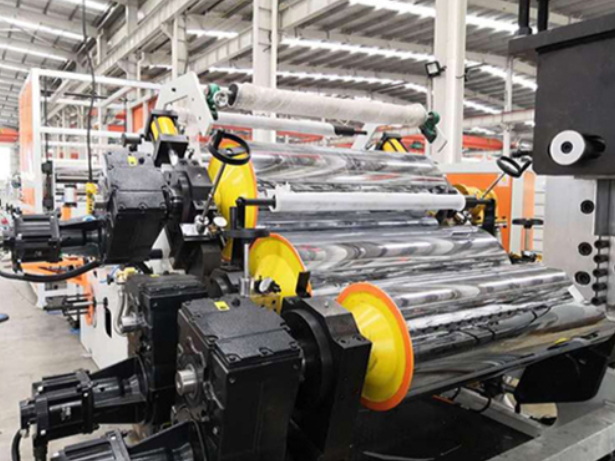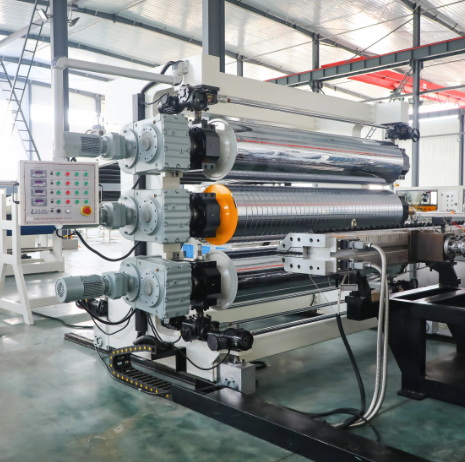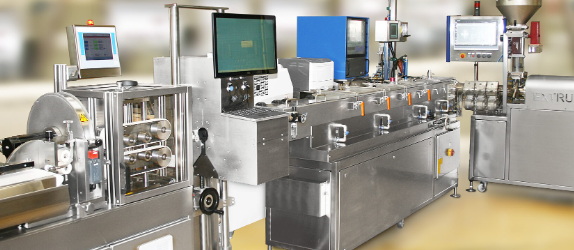Content Menu
● Introduction to Conventional Film Extrusion Machinery
>> Process Overview
● Advantages of Conventional Film Extrusion Machinery
>> Cost-Effectiveness
>> Versatility
>> Consistency
>> Customizability
>> Environmental Considerations
● Applications of Conventional Film Extrusion Machinery
>> Packaging Industry
>> Agricultural Sector
>> Industrial Applications
● Types of Conventional Film Extrusion Machinery
>> Mono-Layer Machines
>> Multi-Layer Machines
● Technological Innovations in Conventional Film Extrusion Machinery
● Challenges and Limitations
● Future Developments
● Conclusion
● Frequently Asked Questions
>> 1. What types of plastics are commonly used in conventional film extrusion machinery?
>> 2. How does conventional film extrusion differ from cast film extrusion?
>> 3. Can conventional film extrusion machinery produce multi-layer films?
>> 4. What are the environmental benefits of using conventional film extrusion machinery?
>> 5. What are the key benefits of using conventional film extrusion machinery for packaging?
● Citations:
Conventional film extrusion machinery has been a cornerstone in the plastics industry for decades, offering numerous benefits that make it a preferred choice for manufacturers worldwide. This article will delve into the advantages of conventional film extrusion machinery, exploring its efficiency, versatility, and cost-effectiveness, as well as its applications across various sectors.

Introduction to Conventional Film Extrusion Machinery
Conventional film extrusion machinery is primarily used for producing plastic films through a process known as blown film extrusion. This method involves melting plastic pellets and extruding them through a circular die, forming a tube that is then inflated with air to create a bubble. The bubble is cooled and flattened into a film, which is then wound onto rolls for further processing or packaging.
Process Overview
The process of conventional film extrusion involves several key steps:
1. Feeding: Plastic pellets are fed into an extruder.
2. Melting: The pellets are heated and melted as they pass through the extruder.
3. Extrusion: The molten plastic is forced through a circular die to form a tube of plastic.
4. Inflation: Air is blown into the tube to expand it, creating a bubble.
5. Cooling: The bubble is cooled by air rings to solidify the film.
6. Flattening: The bubble is collapsed into flat film through nip rollers.
7. Winding: The film is wound onto rolls for further processing or packaging.
Advantages of Conventional Film Extrusion Machinery
Cost-Effectiveness
One of the primary advantages of conventional film extrusion machinery is its cost-effectiveness. This process allows for the production of large volumes of film at a significantly lower cost compared to alternative methods, making it an economically viable choice for manufacturers[2]. The lower melting temperature required in blown film extrusion also reduces manufacturing costs[1].
Versatility
Conventional film extrusion machinery is compatible with a broad spectrum of plastic materials, enabling the creation of films tailored to various properties and applications. This adaptability makes it suitable for diverse industries, from packaging to agriculture[2].
Consistency
The process ensures the production of uniform films that exhibit a high level of clarity and strength. This consistency is crucial for applications where quality and reliability are paramount[2].
Customizability
Conventional film extrusion machinery offers extensive customization options, allowing manufacturers to specify parameters such as thickness, width, and color. This flexibility enables the production of films that meet precise requirements for specific applications[2].
Environmental Considerations
While conventional film extrusion machinery itself is efficient and generates minimal waste, the use of recyclable or biodegradable materials can further enhance its environmental sustainability.
Applications of Conventional Film Extrusion Machinery
Conventional film extrusion machinery is widely used in various industries due to its versatility and efficiency.
Packaging Industry
In the packaging sector, conventional film extrusion machinery is used to produce films for food packaging, shopping bags, and shrink wrap. These films offer excellent barrier properties and are cost-effective[4].
Agricultural Sector
In agriculture, films produced by conventional film extrusion machinery are used for mulching and greenhouse applications. These films help control soil temperature and retain moisture, improving crop yields[4].
Industrial Applications
Beyond packaging and agriculture, conventional film extrusion machinery is also used in industrial applications such as construction and electronics, where specialized films are required for insulation and protection[4].

Types of Conventional Film Extrusion Machinery
Mono-Layer Machines
Mono-layer machines are simple and cost-effective, producing single-layer films suitable for basic applications like t-shirt bags and flat bags.
Multi-Layer Machines
Multi-layer machines, such as ABA and ABC configurations, offer more complex film structures with improved strength and barrier properties. These are ideal for demanding applications requiring specific functionalities[5].
Technological Innovations in Conventional Film Extrusion Machinery
Recent advancements in conventional film extrusion machinery have focused on improving efficiency and product quality. These include:
- Advanced Cooling Systems: Enhanced cooling techniques reduce the time required for film solidification, improving production rates and film quality[3].
- Automated Systems: Automated cutting and handling systems minimize manual labor and reduce material waste, enhancing overall efficiency[3].
- Precision Control Systems: These systems allow for precise control over film thickness and properties, ensuring consistent product quality[6].
Challenges and Limitations
Despite its advantages, conventional film extrusion machinery also faces some challenges:
- Inefficient Cooling Process: The cooling mechanism in blown film extrusion is less effective compared to flat film production, leading to longer cooling times and potential quality issues[2].
- Thickness Control: Achieving precise thickness control in blown films is inherently complex, which can result in quality inconsistencies[2].
- Lower Production Rates: The intricate nature of the blown film extrusion process results in lower manufacturing rates compared to cast films, which can hinder production efficiency[2].
Future Developments
As technology continues to evolve, conventional film extrusion machinery is likely to see improvements in efficiency, sustainability, and product customization. The integration of advanced materials and processes will further enhance its versatility and environmental friendliness.
Conclusion
In conclusion, conventional film extrusion machinery offers numerous advantages, including cost-effectiveness, versatility, consistency, and customizability. Its applications span across various industries, making it a cornerstone in the production of high-quality plastic films. As technology advances, the capabilities of conventional film extrusion machinery continue to expand, providing even more possibilities for innovation.

Frequently Asked Questions
1. What types of plastics are commonly used in conventional film extrusion machinery?
Common plastics used include polyethylene (PE), polypropylene (PP), and polyvinyl chloride (PVC), each offering different properties suitable for various applications.
2. How does conventional film extrusion differ from cast film extrusion?
Conventional film extrusion involves inflating a molten plastic tube, while cast film extrusion involves extruding molten plastic through a flat die and cooling it on a chill roll. Both processes have unique advantages depending on the desired film properties.
3. Can conventional film extrusion machinery produce multi-layer films?
Yes, specialized equipment like co-extrusion lines allows for the production of multi-layer films, combining different materials to achieve specific characteristics such as improved barrier properties or increased strength.
4. What are the environmental benefits of using conventional film extrusion machinery?
Conventional film extrusion machinery is efficient and generates minimal waste. Using recyclable or biodegradable materials can further enhance its environmental sustainability.
5. What are the key benefits of using conventional film extrusion machinery for packaging?
The key benefits include cost-effectiveness, customizability, and the ability to produce films with excellent barrier properties, making it a preferred choice for food packaging and other applications.
Citations:
[1] https://www.thongguan.com/film-extrusion-and-why-is-it-important/
[2] https://eupegypt.com/blog/blown-film-extrusion/
[3] https://jieyatwinscrew.com/blog/everything-you-need-to-know-about-plastic-extrusion-machines/
[4] https://www.kingplastmachinery.com/blog/what-products-are-made-with-blown-film-extrusion
[5] https://www.plasco.com.tw/en/article/Types-of-Blown-Film-Extrusion-Machines-for-Plastic-Bags.html
[6] https://viemachinery.com/understanding-blown-film-extrusion-machines-types-and-uses/
[7] https://viemachinery.com/understanding-blown-film-extrusion-process-equipment-and-uses/
[8] https://en.wikipedia.org/wiki/Plastic_extrusion
[9] https://www.plastar-machine.com/en/article/Blown-Film-Machine-Ultimate-Guide.html
[10] https://www.plastar-machine.com/en/products.html
[11] https://www.prm-taiwan.com/blog/blown-film-machine-vs-blow-molding-difference-comparison_331
[12] https://www.polystarco.com/blog-detail/co-extrusion-ab-and-aba-blown-film-machine-a-simple-comparison/
[13] https://www.jwellmachine.com/analysis-of-plastic-extrusion-technology/
[14] https://dallasplastics.com/blog/multi-layer-co-extruded-films-advantages/
[15] https://www.chplasticmachinery.com/blog/benefits-of-using-an-extruder-machine-for-your-manufacturing-process/
[16] https://www.bgplast.it/plastic-extrusion-unveiled-an-analysis-of-different-techniques/
[17] https://www.polystarco.com/blog-detail/advantages-of-using-monolayer-blown-film-machines-for-plastic-packaging/
[18] https://www.plastemart.com/plastic-technical-articles/ldpe-low/1824
[19] https://www.chyiyang.com/guide-to-blown-film-extrusion-machines
[20] https://www.polysack.com/top-3-benefits-of-machine-direction-oriented-mdo-pe-films/
[21] https://www.pearltechinc.com/2025/02/13/extrusion-equipment-blown-film-efficiency/
[22] https://www.qenos.com/internet/home.nsf/(LUImages)/TG3Film/$File/TG3Film.pdf
[23] https://www.linkedin.com/pulse/maximize-plastic-film-sheet-production-one-machine-zgqyf
[24] https://bio-fed.com/en/bioplastics/blown-film-extrusion
[25] https://sites.google.com/view/spectra-trends-insights/research-reports/plastic-extrusion-machine-market-by-application
[26] https://www.polystarco.com/blog-detail/common-uses-for-3-layer-blown-film-machines-in-the-plastic-industry/
[27] https://www.mdpi.com/2673-9976/28/1/11
[28] https://environment.ec.europa.eu/system/files/2021-09/Agricultural%20Plastics%20Final%20Report.pdf
[29] https://www.osterman-co.com/applications/blown-film/
[30] https://www.polystarco.com/blog-detail/recycled-materials-as-a-key-element-for-blown-film-extrusion-in-latin-america/






















